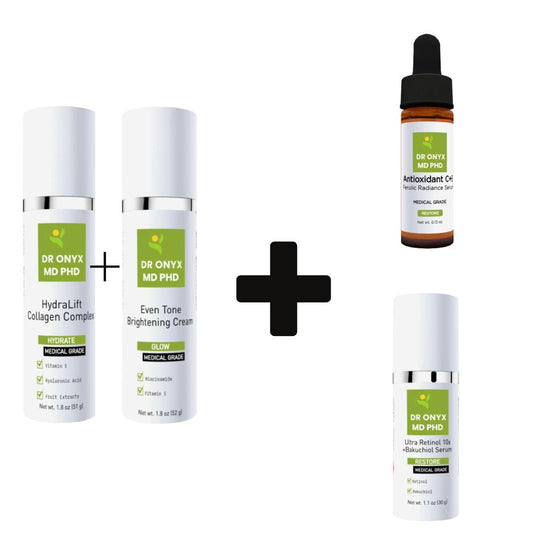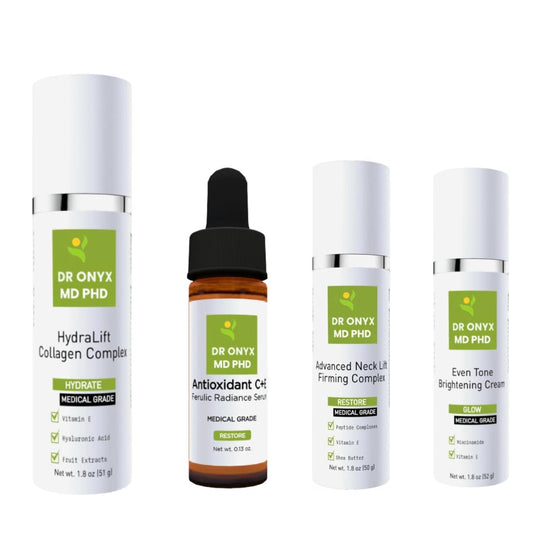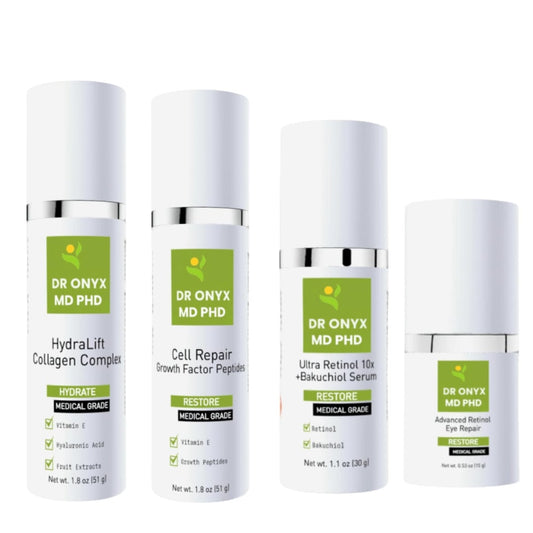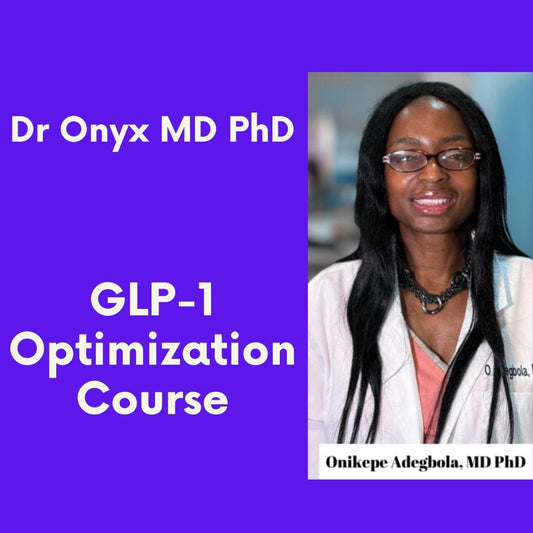Top Supplements That Increase GLP-1 Naturally
The buzz around GLP-1 medications like Ozempic and Wegovy has sparked interest in natural alternatives that can boost this beneficial hormone. Glucagon-like peptide-1 (GLP-1) plays a crucial role in regulating blood sugar, appetite, and metabolism. While prescription GLP-1 agonists are effective for weight loss and diabetes management, many people are seeking natural supplements that can enhance their body's own GLP-1 production.
This comprehensive guide explores evidence-based supplements that may naturally increase GLP-1 levels, helping you make informed decisions about which options might complement your health goals without the prescription price tag or potential side effects of pharmaceutical options.
Understanding GLP-1 and Its Functions
GLP-1 is a hormone primarily produced in the intestines in response to food intake. When released, it triggers several beneficial effects throughout the body. It slows gastric emptying (keeping you feeling full longer), stimulates insulin release from the pancreas (helping manage blood sugar), and signals the brain to reduce appetite and food intake.
The pharmaceutical versions of GLP-1 medications work by mimicking this hormone's effects, but at much higher concentrations than the body naturally produces. However, certain dietary supplements and natural compounds may help stimulate your body's own GLP-1 production or enhance its effectiveness.
Why Natural GLP-1 Enhancement Matters
Boosting your body's natural GLP-1 production offers several advantages. Unlike prescription GLP-1 medications, which can cause side effects like nausea, vomiting, and in rare cases, more serious issues, natural approaches typically come with fewer adverse effects. Additionally, supporting your body's inherent GLP-1 mechanisms may provide more sustainable metabolic benefits over time, especially when combined with healthy lifestyle practices.
Top Supplements for Natural GLP-1 Enhancement
Berberine: The Botanical GLP-1 Booster
Berberine, a compound found in plants like barberry and goldenseal, has gained attention for its impressive metabolic benefits. Research indicates that berberine can increase GLP-1 secretion while also improving insulin sensitivity. A 2011 study published in the journal Metabolism showed that berberine treatment significantly increased GLP-1 levels in diabetic rats.
The typical recommended dosage ranges from 500mg to 1500mg daily, divided into multiple doses. Berberine works through multiple mechanisms, including activating AMP-activated protein kinase (AMPK), often referred to as the body's "metabolic master switch." This activation not only enhances GLP-1 secretion but also improves glucose metabolism and lipid profiles.
While generally well-tolerated, berberine may cause digestive discomfort in some individuals, particularly at higher doses. Starting with a lower dose and gradually increasing can help minimize these effects.
Glutamine: Amino Acid Support for GLP-1
L-glutamine, an abundant amino acid in the body, serves as a primary fuel source for intestinal cells, including those that produce GLP-1. Research published in the Journal of Nutrition has demonstrated that glutamine supplementation can stimulate GLP-1 secretion in both animal models and human studies.
A typical supplemental dose ranges from 5-10 grams daily, though higher doses have been used in clinical settings. Glutamine appears to work by directly stimulating the intestinal L-cells responsible for GLP-1 production. Beyond its effects on GLP-1, glutamine also supports gut barrier function and immune health, making it a multifaceted supplement for metabolic and digestive wellness.
Curcumin: Turmeric's Active Compound
Curcumin, the active component in turmeric, has been studied for its potential to increase GLP-1 levels. Research published in Endocrinology and Metabolism showed that curcumin supplementation increased GLP-1 secretion in mice with diabetes. The effect appears to be related to curcumin's ability to reduce oxidative stress and inflammation in the intestinal cells that produce GLP-1.
Standard curcumin supplements typically provide 500-1000mg daily, though absorption can be an issue. For better bioavailability, look for formulations that include piperine (black pepper extract) or use technologies like liposomal delivery or nanoparticles. Beyond its potential GLP-1 effects, curcumin offers broad anti-inflammatory benefits that may support overall metabolic health.
Prebiotic Fiber Supplements
Inulin and Fructooligosaccharides (FOS)
Prebiotic fibers like inulin and FOS have demonstrated significant potential for increasing GLP-1 levels. These fermentable fibers serve as food for beneficial gut bacteria, which then produce short-chain fatty acids (SCFAs) such as butyrate, propionate, and acetate. These SCFAs directly stimulate L-cells in the intestine to release GLP-1.
A 2015 study in the journal Diabetes found that prebiotic fiber supplementation increased GLP-1 production and improved glucose metabolism in overweight adults. Typical effective doses range from 5-10 grams daily, though starting with lower amounts (2-3 grams) is advisable to minimize potential digestive discomfort like bloating or gas as your gut microbiome adapts.
Inulin is naturally found in foods like chicory root, Jerusalem artichokes, and dandelion greens, but supplements provide a more concentrated and convenient source. When choosing a prebiotic supplement, look for products that specify the type and amount of prebiotic fiber, as quality and composition can vary significantly between brands.
Glucomannan and Other Viscous Fibers
Glucomannan, derived from the konjac root, is a highly viscous, water-soluble fiber that forms a gel-like substance in the digestive tract. This property slows digestion and can enhance GLP-1 secretion in response to meals. Other viscous fibers with similar effects include psyllium husk and guar gum.
Research published in the American Journal of Clinical Nutrition has shown that viscous fibers can increase postprandial GLP-1 levels and improve insulin sensitivity. Effective doses typically range from 2-4 grams before meals. These fibers work by prolonging the contact time between nutrients and the L-cells in the intestine that secrete GLP-1, while also slowing glucose absorption.
Bioactive Plant Compounds
Green Tea Extract (EGCG)
Epigallocatechin gallate (EGCG), the primary catechin in green tea, has shown promise for enhancing GLP-1 activity. A study published in the Journal of Agricultural and Food Chemistry found that EGCG inhibits dipeptidyl peptidase-4 (DPP-4), an enzyme that rapidly degrades GLP-1 in the body. By inhibiting this enzyme, EGCG may extend the active life of naturally produced GLP-1.
Typical green tea extract supplements provide 300-500mg of EGCG daily. For those sensitive to caffeine, decaffeinated green tea extract options are available. Beyond its potential effects on GLP-1, green tea extract offers additional metabolic benefits through its effects on fat oxidation and thermogenesis.
Resveratrol
Resveratrol, found in red wine, grapes, and berries, has been studied for its potential to enhance GLP-1 signaling. Research in the journal Diabetes, Obesity and Metabolism demonstrated that resveratrol supplementation increased GLP-1 secretion and improved glucose tolerance in animal models.
Typical supplemental doses range from 100-500mg daily. Resveratrol appears to work through multiple mechanisms, including activation of sirtuin proteins (particularly SIRT1) and enhancement of mitochondrial function. These effects may contribute to improved metabolic health beyond just GLP-1 enhancement.
Mineral Supplements
Zinc
Zinc is an essential mineral that plays numerous roles in metabolism and hormone regulation. Research has shown that zinc supplementation can increase GLP-1 secretion and improve glycemic control in people with diabetes. A study in the journal Diabetes, Obesity and Metabolism found that zinc supplementation increased postprandial GLP-1 levels and improved insulin sensitivity.
The recommended daily allowance for zinc is 8-11mg for adults, though slightly higher doses (15-30mg) have been used in studies examining metabolic effects. Zinc appears to enhance GLP-1 secretion by improving the function of pancreatic beta cells and intestinal L-cells. It's worth noting that excessive zinc supplementation can interfere with copper absorption, so balanced formulations or periodic monitoring may be advisable for long-term use.
Combining Supplements for Enhanced Effects
While individual supplements can influence GLP-1 levels, combining complementary approaches may offer synergistic benefits. For example, pairing prebiotic fibers with berberine might enhance both the production of GLP-1 and its downstream effects on metabolism. Similarly, using zinc alongside curcumin could potentially address multiple aspects of metabolic health while supporting GLP-1 function.
When combining supplements, it's important to start with lower doses of each and gradually increase as tolerated. This approach minimizes the risk of digestive discomfort and allows you to identify which combinations work best for your body. As always, consulting with a healthcare provider before beginning any new supplement regimen is advisable, especially if you have existing health conditions or take medications.
Lifestyle Factors That Enhance Supplement Effectiveness
Meal Timing and Composition
The effectiveness of GLP-1-enhancing supplements can be significantly influenced by when and how you take them. Many of these supplements work best when taken before or with meals, as they can enhance the natural GLP-1 response to food intake. Additionally, the composition of your meals matters—higher protein and fiber content naturally stimulates greater GLP-1 release, potentially amplifying the effects of supplements.
Consider taking prebiotic fibers or berberine 15-30 minutes before meals for optimal effect. Structuring your diet to include protein at each meal and emphasizing whole, minimally processed foods can create an ideal foundation for GLP-1-enhancing supplements to work their magic.
Exercise and GLP-1 Sensitivity
Regular physical activity enhances the body's sensitivity to GLP-1 and improves its metabolic effects. Research published in the Journal of Clinical Endocrinology and Metabolism has shown that exercise increases GLP-1 receptor expression and enhances the hormone's effects on appetite regulation and glucose metabolism.
Combining a consistent exercise routine with GLP-1-enhancing supplements may offer synergistic benefits for weight management and metabolic health. Both moderate-intensity aerobic exercise and resistance training appear beneficial, with even modest amounts of activity (30 minutes daily) showing positive effects.
Conclusion
While prescription GLP-1 medications offer powerful therapeutic effects, natural supplements provide accessible alternatives for those looking to enhance their body's own GLP-1 production and activity. From berberine and glutamine to prebiotic fibers and plant compounds like curcumin and resveratrol, numerous evidence-based options exist for supporting this important metabolic hormone.
The most effective approach likely involves combining several complementary supplements while also optimizing lifestyle factors like diet quality, meal timing, and physical activity. As with any supplement regimen, individual responses vary, and patience is key—natural approaches typically produce more gradual effects compared to pharmaceutical interventions.
Before beginning any new supplement regimen, particularly if you have existing health conditions or take medications, consulting with a healthcare provider is always recommended. With the right combination of supplements and lifestyle practices, supporting your body's natural GLP-1 mechanisms may offer a sustainable path to improved metabolic health.





